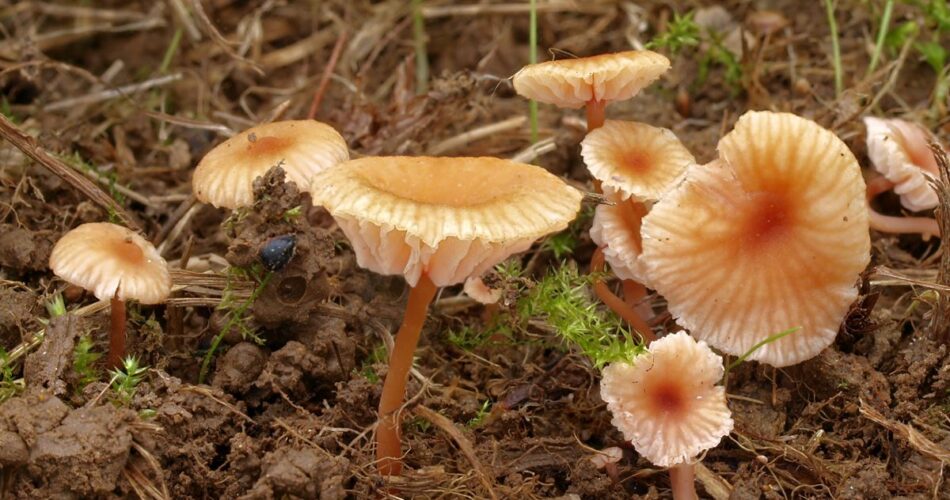Although it’s quite widely distributed, Pholiotina smithii is a rare mushroom. It’s a member of the genus Pholiotina, which contains few species, including psychedelic and poisonous species. Read on to learn more about P. smithii.
Pholiotina Smithii: Appearance
Pholiotina smithii is a very small, cinnamon-brown mushroom that typically grows up to 5 cm long (1.9 inches). The caps are approximately 0.3 to 1.3 cm in diameter, brown and get darker at edges. When the mushroom is wet, it tends to become lighter in color. The gills are adnate, closely spaced and pale, yellowish or brown in color, with whitish edges when young, but turn cinnamon-brown or rusty with age. The stipe is fragile, slightly swollen at the base (although it may be equal as well) and lacks an annulus. The odor is starchy, similarly to other types of magic shrooms.
Pholiotina Smithii: Habitat and Distribution
Pholiotina smithii is a rare variety of mushroom that inhabits certain habitats, although its distribution may be wider than it is assumed. It can be found in ditches, swampy areas, bogs or along river banks. It can also grow in lawns. Pholiotina smithii appears in early summer (it is rarely seen after the first week of June). It grows in Northern America (particularly Canada), and the USA (Washington, Oregon, Wisconsin, Northern Michigan).
Pholiotina Smithii: Psychedelic Compounds
Pholiotina smithii is a species of fungi that contains the psychedelic compounds psilocybin and psilocin. Psilocybin is converted to psilocin in the body, and it is psilocin that is responsible for the psychoactive effects. Psilocybin and psilocin are thought to work by binding to serotonin receptors in the brain, resulting in altered states of consciousness.
Pholiotina Smithii: Potency
Pholiotina smithii is a species of mushroom that is known for its relatively mild potency. Compared to many other types of mushrooms, this species tends to have low levels of psychoactive compounds like psilocybin and psilocin. This means that it typically produces less intense and shorter-lasting experiences than other types of hallucinogenic mushrooms. It is important to note that Philiotina smithii can be very difficult to distinguish from poisonous mushrooms, so it is advisable to avoid consuming them.
Similar Posts:
- Psilocybe Muliercula: Discover a Rare and Potent Magic Mushroom
- Galerina Steglichii: A Very Rare and Mysterious Psilocybin Mushroom Found in a Greenhouse
- Gymnopilus Viridans: Uncommon Shrooms Species
- Psilocybe Mescaleroensis: Potent Magic Mushroom Species
- Pluteus Glaucus: Rare Mushrooms Species
- Psilocybe Bohemica: A Psilocybin Mushroom From Europe. All the Information You Need to Know About the Species
- Psilocybe Subcaerulipes: A Japanese Mushroom That Contains Psilocybin. History & Morphology of the Species




